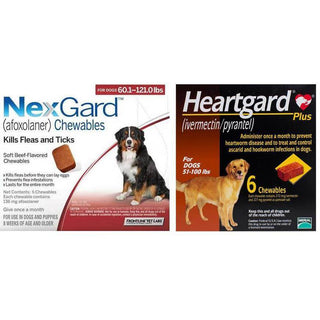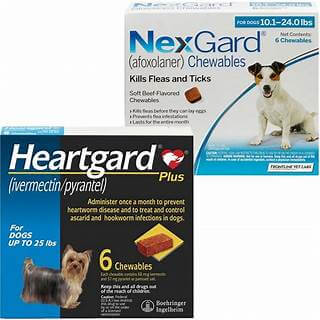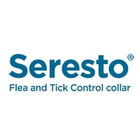
Just like humans, dogs can develop skin rashes for various reasons — from allergies and parasites to infections and poor grooming habits. While some rashes may look minor, they can cause significant discomfort and indicate underlying health issues that need attention. Understanding what causes your dog’s rash, how to identify it early, and when to seek veterinary help can make all the difference in keeping your furry friend comfortable and healthy.
This guide covers the common causes, symptoms, and treatments for dog rashes, along with preventive tips to maintain your dog’s skin health year-round.
Common Causes of Dog Skin Rashes
Dog skin rashes can appear due to several factors. Identifying the root cause is the first step to effective treatment.
1. Allergies
Allergies are one of the main causes of skin rashes in dogs. They can be triggered by:
- Environmental allergens like pollen, dust mites, and mold.
- Food ingredients, especially proteins such as chicken, beef, or dairy.
- Contact allergies from shampoos, cleaning products, or grass.
Allergic reactions can lead to red, itchy, and inflamed skin. In some cases, your dog might also experience ear infections or excessive scratching.
2. Parasites (Fleas, Ticks, and Mites)
Parasites like fleas and ticks can cause intense itching and irritation. Even a single flea bite can trigger an allergic reaction in sensitive dogs, leading to red spots, scabs, or hair loss.
Mites can cause mange, a condition characterized by severe itching, scaly patches, and skin inflammation. Regular use of flea and tick preventatives is the best way to protect your dog.
3. Bacterial or Fungal Infections
Skin infections are often secondary problems that occur when dogs scratch or bite their irritated skin. Common infections include:
- Pyoderma (bacterial infection) appears as pustules, redness, and scabbing.
- Yeast infections, causing greasy skin and a musty odor, often occur around the ears, paws, and armpits.
These infections require proper diagnosis and antibiotic or antifungal treatment prescribed by your vet.
4. Poor Grooming or Hygiene
Irregular grooming can lead to dirt buildup, tangles, and trapped moisture — perfect conditions for bacterial growth. Dogs with long or thick coats are particularly prone to rashes under the fur where air circulation is low.
Regular brushing, bathing with gentle shampoos, and drying your dog thoroughly after a bath or swim can prevent such problems.
5. Hormonal Imbalances
Conditions like hypothyroidism or Cushing’s disease can cause hormonal imbalances that affect skin health. These dogs may show symptoms such as thinning hair, dark patches, or recurring rashes. Blood tests are usually required to confirm such conditions.
6. Environmental Factors
Extreme weather — both hot and humid or dry and cold — can irritate your dog’s skin. In humid climates, moisture encourages fungal growth, while dry air can cause flakiness and itching.
Maintaining proper humidity levels and using moisturizing sprays or supplements can help balance your dog’s skin health.
Recognizing Symptoms of Dog Skin Rashes
Early detection can prevent minor irritation from turning into a more serious infection. Look out for these common signs of dog rashes:
- Red or inflamed patches of skin
- Excessive scratching, licking, or chewing
- Hair loss or bald spots
- Scabs, bumps, or flaky skin
- Foul odor or greasy texture
- Constant head shaking or ear scratching (possible ear infection)
If your dog seems restless, uncomfortable, or the rash worsens, consult your veterinarian promptly.
Treatment Options for Dog Rashes
The appropriate treatment varies based on what’s causing the rash. Here are the most effective solutions recommended by veterinarians:
1. Topical Medications
Your vet may prescribe medicated shampoos, sprays, or creams to soothe the skin and control inflammation. Products containing aloe vera, oatmeal, or hydrocortisone can relieve itching and promote healing.
2. Oral Medications
In severe cases, oral antibiotics, antifungals, or anti-inflammatory drugs may be required to eliminate infections and reduce discomfort. Always follow your vet’s dosage instructions carefully.
3. Parasite Control
Use flea and tick preventatives such as oral tablets, topical solutions, or collars to keep parasites away. Consistent monthly use is crucial for prevention.
4. Dietary Adjustments
If food allergies are suspected, your veterinarian might recommend an elimination diet — introducing new protein and carbohydrate sources gradually to identify the allergen. High-quality, hypoallergenic diets often reduce recurring rashes.
5. Allergy Treatments
For dogs with seasonal or environmental allergies, antihistamines or allergy shots (immunotherapy) can help build long-term resistance. Your vet may also suggest omega-3 fatty acid supplements for improved skin health.
6. Proper Grooming Routine
Bathe your dog using mild, vet-approved shampoos, and brush regularly to remove dead skin and dirt. Avoid harsh products or over-bathing, as it can strip natural oils from the skin.
Home Care and Prevention Tips
A consistent skincare routine can help prevent rashes and keep your dog’s coat shiny and healthy.
✅ Regular Grooming: Brush your dog’s fur regularly to prevent matting and improve air circulation.
✅ Balanced Diet: Feed a diet rich in vitamins, omega-3 fatty acids, and minerals to promote strong skin and coat.
✅ Parasite Protection: Use monthly preventatives for fleas, ticks, and mites.
✅ Clean Bedding: Wash your dog’s bedding and toys frequently to remove allergens and bacteria.
✅ Hydration: Make sure that your dog always has access to fresh water, especially during warm weather.
✅ Regular Vet Checkups: Early diagnosis can help manage allergies, hormonal issues, or infections before they worsen.
When to See a Veterinarian
While minor irritations can sometimes be managed at home, persistent or severe rashes need medical attention. Seek veterinary help if:
- The rash spreads or worsens despite home care
- Your dog constantly scratches or licks the same area
- There’s a foul odor or pus from the rash
- The dog seems lethargic or loses its appetite
Prompt diagnosis ensures the proper treatment and faster recovery.
Conclusion
Dog rashes are more than just a skin problem — they can signal deeper health issues. By recognizing the symptoms early, maintaining a healthy diet, and following a consistent grooming and parasite prevention routine, you can help your dog stay itch-free and comfortable.
If your dog’s rash doesn’t improve within a few days or keeps recurring, consult your veterinarian immediately. Proper care and attention will keep your furry companion’s skin healthy and glowing year-round.






